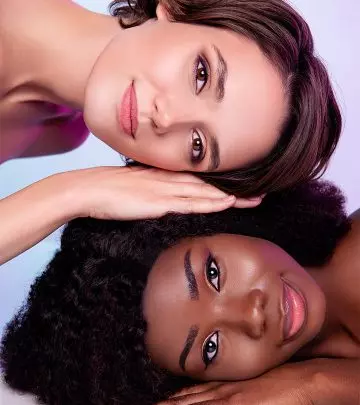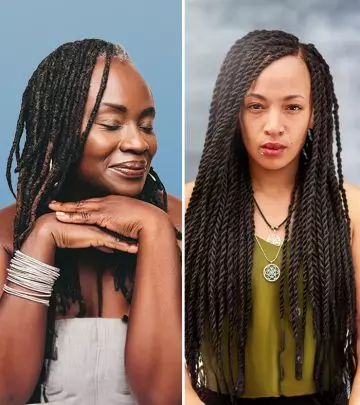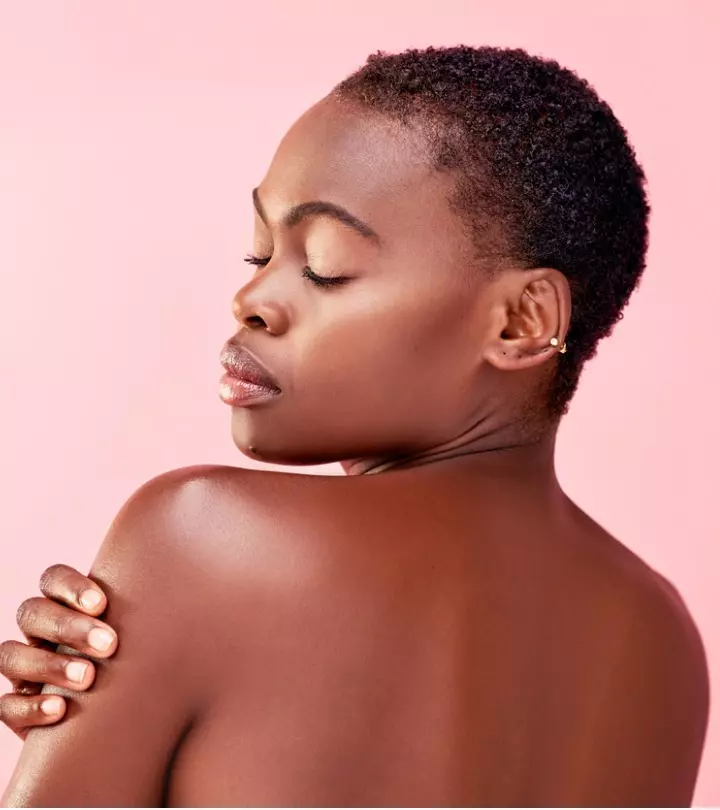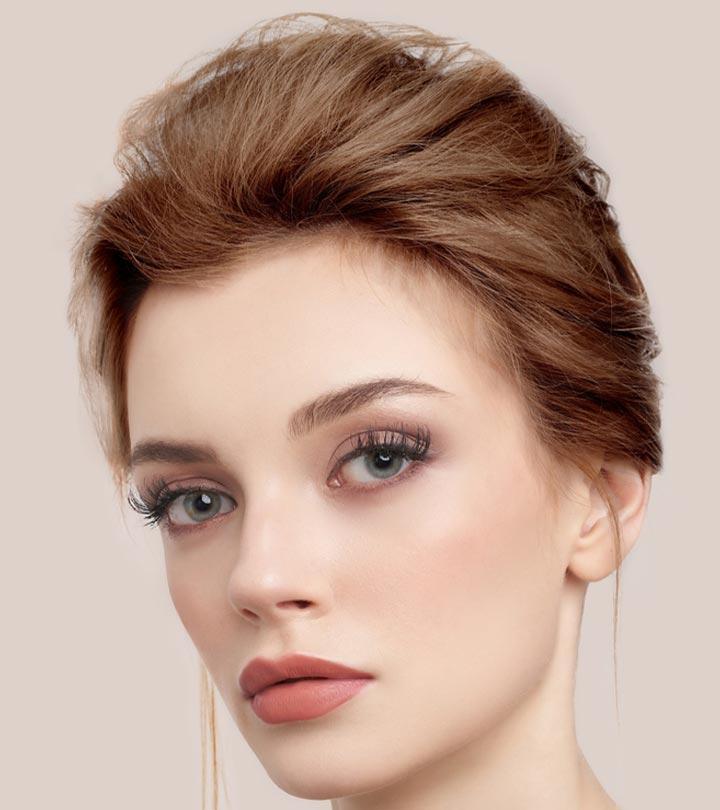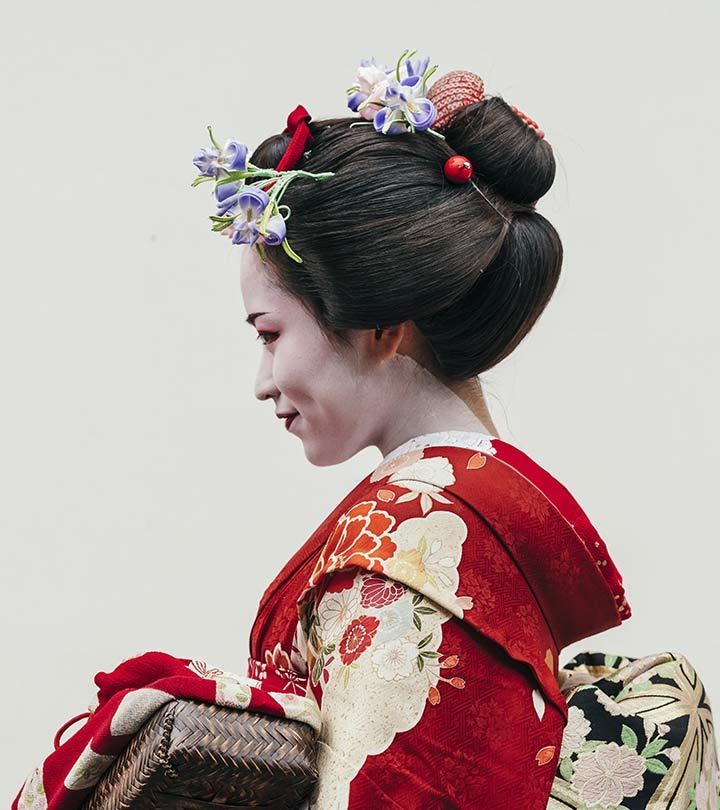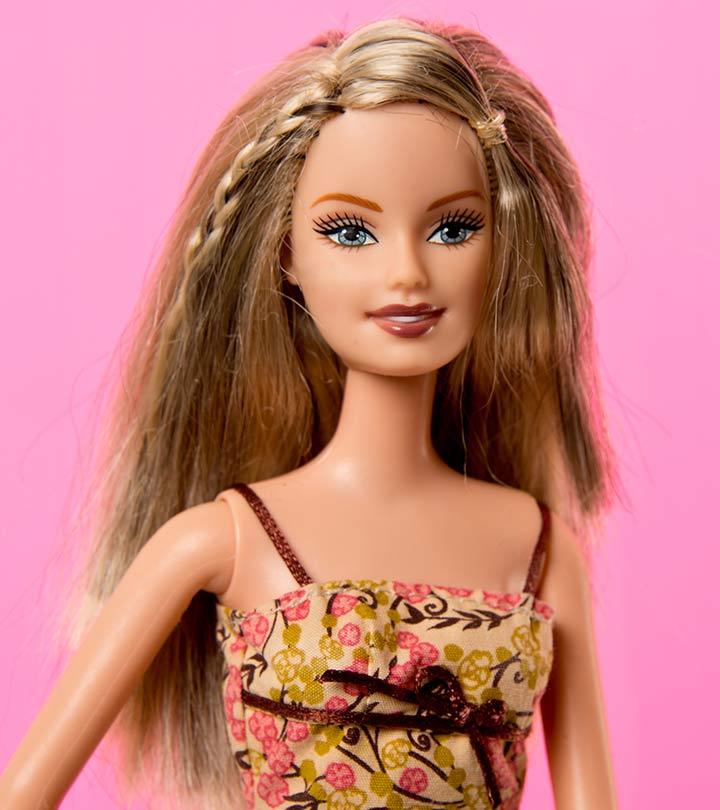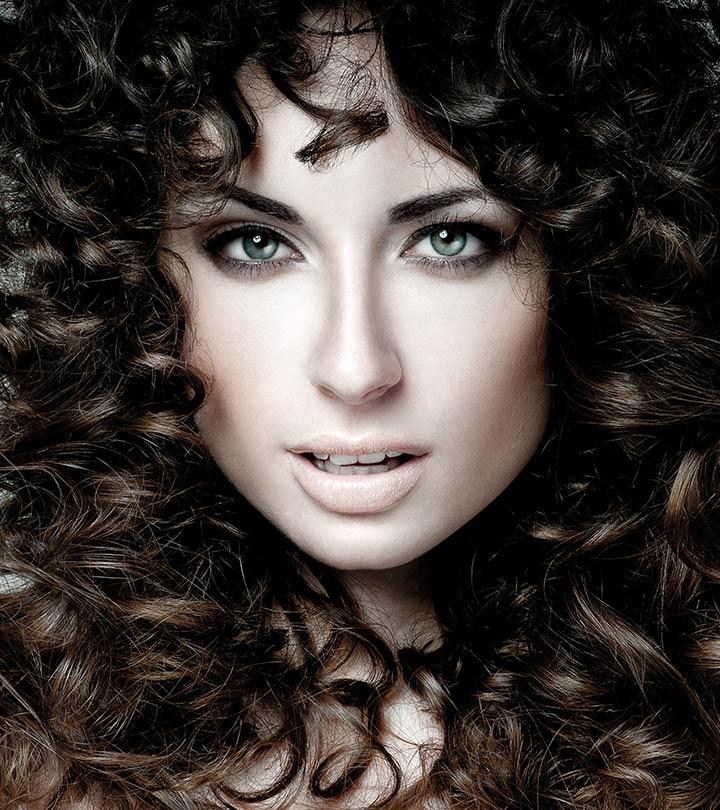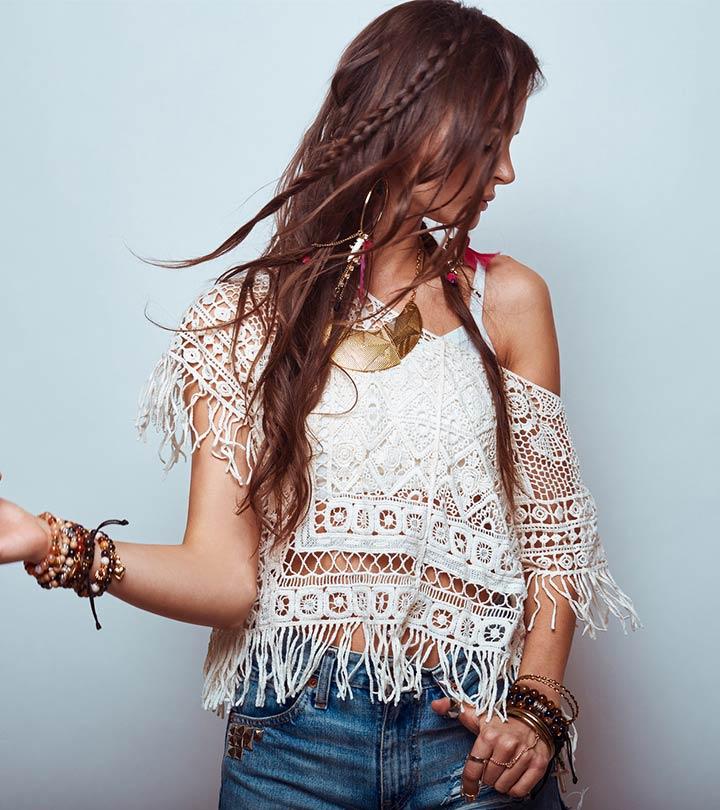Microlocs Vs. Sisterlocks: Which Is Best For You?
Discover the key differences between these sophisticated and refreshingly organic hairstyles.
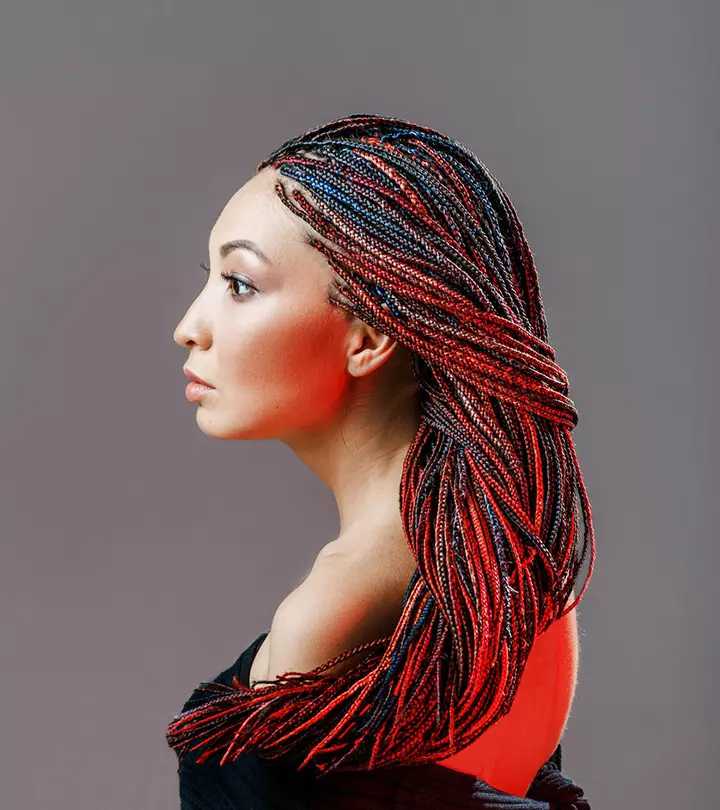
Image: Shutterstock
If you are looking for edgy yet sophisticated hairstyles that capture your personality perfectly, you have come to the right place. Both microlocs and sisterlocks seem like stringy little dreads at first glance. But what really sets them apart? Before you finalize your choice, it is important to get a better understanding of the microlocs vs. sisterlocks debate once and for all. We can all agree that both the intricate, designer dreadlocks look super appealing when simply left loose, but can also be tied up in neat and stunning updos. Plus, daily styling is no more a hassle with these slick locs that sustain on weekly maintenance. The best thing is that although they are protective natural hairstyles, they work well with almost all hair types and make for wonderfully textured hair looks, making them extremely popular dreadlocking methods today. That said, we are here to shed light on their differences, right from the installation methods to the budget to determine which style is suitable for you. So, keep reading to learn more.
In This Article
What Are Microlocs?
View this post on Instagram
Microlocs are a unique type of protective hairstyle done by braiding, twisting, coiling, or using any other interlocking hair manipulation technique on small sections of hair and turning them into thin and stringy dreadlocks. They are a variation of the traditional dreadlocks, featuring dreads with thickness ranging between a yarn and a shoelace. So, without further ado, check out how these intricate locs are intricate locs below.
How Are Microlocs Installed?
Microlocs can be installed by a stylist or you can do it yourself at home. There is no restriction on how thin the locs can be, the interlocking method, or the partition pattern. You can go for micro-braiding, palm rolling, two-strand twists, or any other loc styles. It is important to note that it is a long process and may eventually require another person to help you out with it when trying it yourself. However, if you are not familiar with interlocking protective braiding, it is best to consult a professional and get a neat look done.
It is important to weigh the pros and cons of this stunning hairstyle before you decide to add it to your array of styling options. Check out the next section to know more.
Pros And Cons Of Microlocs
Your style requirements and lifestyle will help determine whether microlocs are the right fit for you. Here are some of the benefits and drawbacks to help you make a choice.
Pros
- Allows customizable installation techniques and slickness of the dread size.
- Protects the hair from environmental damage, breakage, and hair loss.
- Requires less maintenance than loose hair.
- The small-sized braids put less strain on the hair and scalp compared to traditional locks.
- It may promote good scalp health by keeping dryness and flaking at bay.
- Requires fewer installation and maintenance costs as you can choose the installation technique as well as the maintenance methods and products.
Cons
- It can cause discomfort in the beginning for those with sensitive scalps due to the tight braiding technique.
- It takes a lot of time to install, spanning several hours to even days to finish the entire installation process, depending on the preferred style.
- Demands long-term commitment as removing such tiny locs needs professional assistance and can even cause damage if done incorrectly.
- Allows fewer styling opportunities compared to loose hair.
- It can take a lot of time to dry after washing due to the moisture getting trapped within the locs.
- Requires regular retwisting every 4-8 weeks until the locs mature to maintain their shape and prevent unraveling of the style.
- It comes with a larger risk of damage if done by someone with minimal experience with interlocking hair braids.
 Fun Fact
Fun FactEssentially, microlocs are a unique, mini-size variation of dreadlocks offering customizable installation and a unique look, but take a long time to install. But before you decide on your new hairstyle, let us now take a deeper look at what sisterlocks are in the section below.
What Are Sisterlocks?
View this post on Instagram
Sisterlocks are also micro-sized dreadlocks, just like microlocs. However, they have a highly distinct look as they are done using a proprietary method with a special sisterlocking tool. Further, they are done by a professional who has received formal training and certification in the technique and will assist you with the regular touch-ups and maintenance of your locs. To get a better understanding of this hairstyle, scroll down below to understand how the installation is done.
How Are Sisterlocks Installed?
The sisterlock consultant will wash, condition, and dry your hair thoroughly before the process. After that, they use special tools for intricate hair partings and interlocking the hair. They follow a specific grid partition pattern to ensure healthy hair growth. Since these are uniform and the smallest size of locs, they can take an extremely long time and several sessions to complete installation, depending on your hair length.
Just like every other hairstyle, sisterlocks come with their own set of benefits and drawbacks. Find out what they are below.
Pros And Cons Of Sisterlocks
The bunch of benefits this method offers helps draw large-scale clientele. However, they also come with their negatives. Let us take a look at the pros and cons of sisterlocks.
Pros
- It is installed by a certified professional who ensures consistent braid sizes and a neat grid partition pattern for a polished, sophisticated look.
- Distributes hair weight evenly due to uniformly sized dreads that do not weigh the hair down.
- Promotes a healthy scalp while preventing dryness and flakiness.
- Protects the hair from environmental damage, breakage, and hair loss.
- Can be styled in versatile ways like textured braids, buns, and other hairdos.
- Offers a long-lasting, symmetrical, eye-catching styling option.
Cons
- It can be expensive compared to traditionally done locs due to the service charges of the certified professional.
- Takes several hours to multiple sessions split across days for the completion of the entire installation depending on the length of the hair.
- It only allows about 3 mm of uniform loc size, making it difficult to get thinner or thicker locs.
- May strain sensitive scalps during the installation process due to the tight braiding technique.
- Requires regular retwisting every 4-6 weeks using the special sisterlocking tool.
- Demands long-term commitment as removing the locs will require professional help and can lead to damage if done by unskilled hands.
 Trivia
TriviaIf you are still confused about these styles, move on to the next section to get a detailed understanding of the key differences between the two microlocking hairstyles.
Key Differences Between Microlocs And Sisterlocks
View this post on Instagram
We have a basic understanding of what these two variations of dreadlocks are. However, let us dive deeper into their key differences for a fair assessment of what can be suitable for your requirements.
- Installation Process: Microlocs can be done at home while sisterlocks require a certified professional using a specific sisterlocking tool.
- Installation Grid Pattern: Microlocs allow creative braid sizes and uneven partings while sisterlocks require 3mm locs with a specific, intricate grid pattern to ensure a uniform appearance.
- Installation Time: Although both styles are time-consuming due to the intricate and small size of the locs, microlocs may take less time as there need not be uniformity in the sizes and can be done from home.
- Holding Product: Microlocs require using some hair-holding products to prevent the locs from unraveling, whereas sisterlocks are done without the use of additional products.
- Installation Cost: Microlocs are affordable as they allow you a lot of freedom in choosing your technique and braiding style, while the initial installation cost of sisterlocks itself is super expensive and is not accessible for all.
- Maintenance: Microlocs can go a few weeks longer without retwisting and do not need the special sisterlocking tool for the same. They can also be managed using natural hair products as opposed to sisterlocks which require specially formulated products.
- Overall Look: Microlocs have a more raw, Bohemian look, while sisterlocks have a neat and polished look.
These key differences can help you clear your sisterlocks vs. microlocs confusion and determine which style is ideal for you. In the following section, we offer further tips to help you make a decisive choice once and for all.
Tips To Choose The Best Style For You
Here are a few things to consider before choosing the style that works for you.
- Look: If you want a more organic, raw look, opt for microlocs. If you want a neat and sophisticated look, go for sisterlocks.
- Budget: Microlocs is an affordable option as they can be done within a customizable budget, whereas sisterlocks have very high costs for initial installation as well as maintenance.
- Time: Sisterlocks require several sessions with a professional and a uniform installation that can take a few extra hours compared to microlocs that can be done at a convenient and shorter time at home.
- Hair Type: If you have fine or thin hair, microlocs can accommodate your hair density, while sisterlocks are ideal for coarser hair with more volume.
- Scalp Sensitivity: Both styles involve tight braiding and may not be suitable for extremely sensitive scalp. However, you may be able to regulate the tightness to an extent with microlocs.
- Lifestyle: If you lead a physically active lifestyle, you might want to consider which locs will be easier to clean and maintain.
- Commitment: Consider if you want something long-term and how they play into your daily styling routine and lifestyle as these dreads are not easy to remove and require considerable maintenance.
- Professional Consultation: If you are still unable to decide, attend a personal consultation with a hair expert familiar with both styles to help you find the most suitable styling solutions for you.
A blogger shares her personal experience about sisterlocks in her blog post. She writes, “I got Sisterlocks in 2018. About six months into my journey I realized that I don’t like these tiny locs. I should’ve gotten traditional locs. In 2019 Covid hit and the world shut down. I had already been thinking about combining my locs but covid made me go ahead with my decision. After combining my locs I continued to have them interlocked for about a year until I decided to have them twisted/palm rolled in late 2021 (i).”
If one wishes for a more traditional look, microlocs might be a better option, whereas Sisterlocks are ideal for neat, semi-professional looks. Microlocs and sisterlocks are quite similar when it comes to their basic form, but there are quite a few aspects that set them apart, helping you make a convenient yet fashionable choice.
So, that was our informative article on the microlocs vs. sisterlocks debate. Both styles look so similar and yet differ so significantly. Microlocs are convenient for at-home installations and do not have frigid rules when it comes to the thickness of the locs or the kind of partitions as long as they are molded well and do not unravel. On the other hand, authentic sisterlocks can only be done by a certified professional who has trained in this method and uses a specialized tool to ensure all the locs have uniform size and a symmetrical grid pattern. One must take their style preference, lifestyle convenience, and budget into consideration when finalizing their choice. But if you are new to the world of locs, consult a professional stylist to arrive at the best option for you.
Frequently Asked Questions
Are there specific products recommended for microlocs and sisterlocks?
There are no specific products for microlocs. Any hair-holding product like gel or wax will work just fine for microlocs during the installation, while its maintenance can be managed with natural hair oils like coconut or jojoba. Sisterlocks do not require any product during the installation, but there are specially designed maintenance moisturizers prescribed by the consultants to ensure better loc health.
Can microlocs and sisterlocks be removed or changed to another style?
Yes. Both microlocs and sisterlocks can be removed but it is a painstaking and long-drawn process. They can be changed into thicker dreadlocks for a new style. However, the skills of a professional stylist are important for both to ensure minimal damage to the hair in the process.
Do microlocs or sisterlocks work better for different hair textures?
Both styles accommodate different hair textures. However, if your hair is on the finer side, then microlocs are a better option as they can accommodate varying dread thickness.
Key Takeaways
- Both microlocs and sisterlocks are mini, stringy variations of traditional dreadlocks.
- Microlocs allow flexibility in braiding technique, braid thickness, and partition patterns, creating an organic and Bohemian look.
- Sisterlocks are done by certified sisterlocks consultants who ensure a neat grid pattern and microdreads of uniform thickness for a polished look.
- Microlocs are more accessible due to the DIY convenience and low costs, whereas sisterlocks are expensive and not accessible for all.
The defining differences between microlocs and sisterlocks can determine the vibe of your style statement. Watch this informative video to understand the practical differences between them and how they may impact your lifestyle.
Personal Experience: Source
StyleCraze's articles are interwoven with authentic personal narratives that provide depth and resonance to our content. Below are the sources of the personal accounts referenced in this article.
(i) Locs Aren’t Meant To Be Perfecthttps://2dimplzs.wordpress.com/2022/09/26/locs-arent-meant-to-be-perfect/
Read full bio of Anjali Sayee
Read full bio of Joyce Joyson








